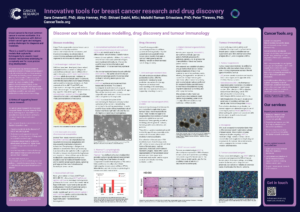Breast cancer is the most common cancer in women worldwide. It is highly heterogeneous with distinct breast cancer types and subtypes, posing challenges for diagnosis and treatment. Invasive ductal carcinoma is the most common type of breast cancer and subtypes are commonly grouped into four categories based on the expression of hormone receptors: oestrogen receptor positive (ER+), progesterone receptor positive (PR+), human epidermal growth factor receptor positive (HER2+), and triple-negative (TNBC), which is characterised by the lack of expression of any of the above receptors. TNBC is the most challenging breast cancer type as it does not respond to any hormonal therapies.
There is a need for breast cancer models that capture its heterogeneity to uncover novel disease mechanisms underlying its complexity and for more precise drug development.
At CancerTools.org, we have curated an extensive collection of breast cancer research tools, deposited by scientists from academic universities and leading cancer centres over 40 years. This includes a diverse array of breast cancer cell lines for improved disease modelling, more complex in vitro patient-derived organoid (PDO), and in vivo patient derived xenograft (PDX) and mouse models to enhance preclinical drug discovery workflows, as well as widely used antibodies to study tumour signalling pathways.













